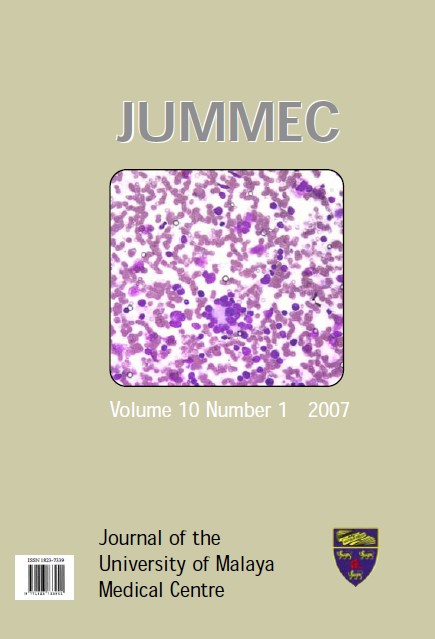QUANTITATIVE EVALUATION OF CHIMERISM STATUS FOLLOWING HAEMATOPOEITIC STEM CELL TRANSPLANTATION USING A MICROCHIP ELECTROPHORESIS SYSTEM
Abstract
We aimed to establish a method for quantitative analysis of mixed haematopoietic chimerism based on microchip electrophoresis of selected molecular markers following PCR amplification for accurate monitoring of graft status post-transplantation. A 12-year-old girl with
relapsed acute lymphoblastic leukaemia who underwent allogeneic bone marrow transplantation had qualitative chimerism analysis using short tandem repeat markers at three time points following the
procedure. Her archived DNA samples were then used to test the ability to correlate her clinical course with changes in the quantity of donor chimerism at the different time points. Quantitative chimerism analysis was performed on the Agilent 2100 bioanalyser and donor-recipient ratios were calculated from generated electropherograms. Complete donor chimerism (98%) was demonstrated three weeks
post- transplantation. Decreasing amount of donor chimerism to 24% was shown after three months and this concurred with clinical relapse. Following a second transplant, full donor chimerism was reestablished
where donor chimerism rose to 100%. High resolution microchip electrophoresis could be useful in predicting the occurrence of increasing recipient chimerism which may herald impending relapse in patients while the disease burden is still low. This investigational approach may provide useful information for clinicians to select appropriate intervention strategies to ensure successful transplantation.
Downloads
Downloads
Published
Issue
Section
License
All authors agree that the article, if editorially accepted for publication, shall be licensed under the Creative Commons Attribution License 4.0 to allow others to freely access, copy and use research provided the author is correctly attributed, unless otherwise stated. All articles are available online without charge or other barriers to access. However, anyone wishing to reproduce large quantities of an article (250+) should inform the publisher. Any opinion expressed in the articles are those of the authors and do not reflect that of the University of Malaya, 50603 Kuala Lumpur, Malaysia.


